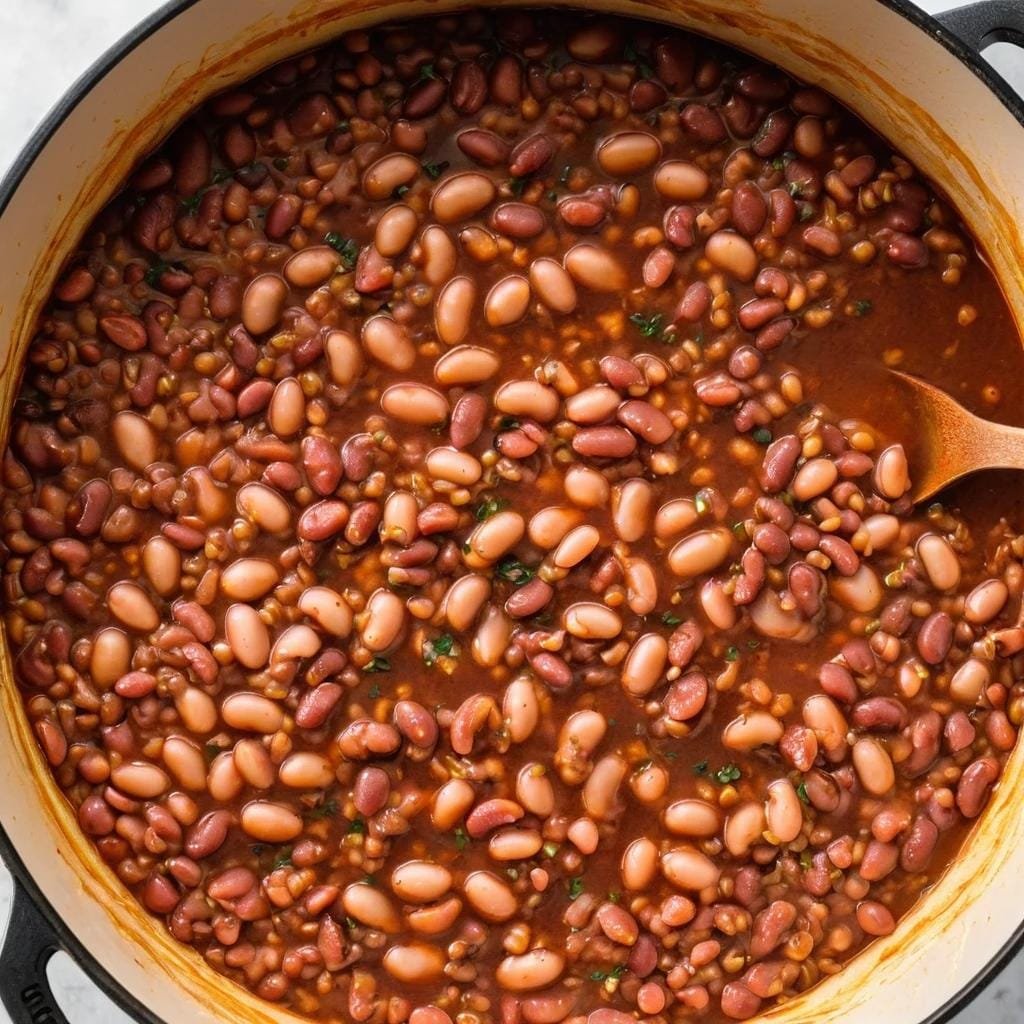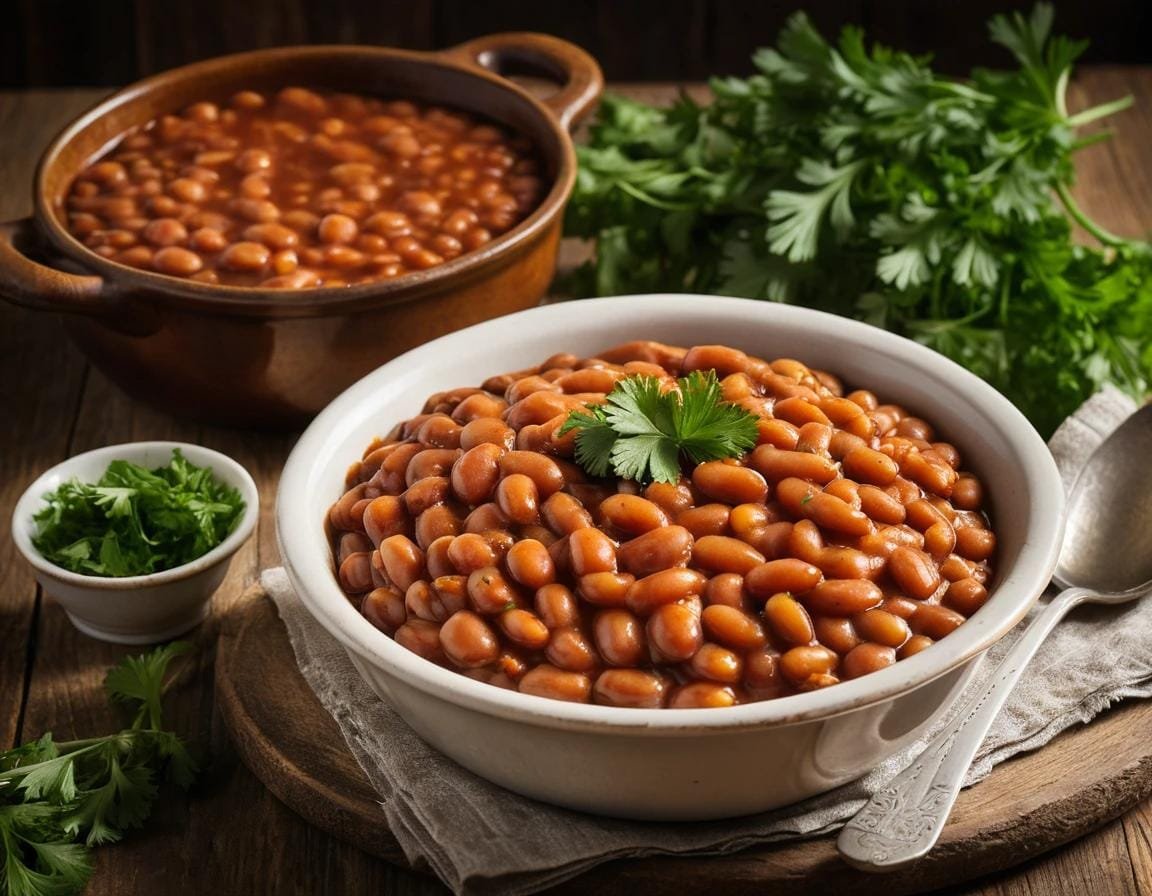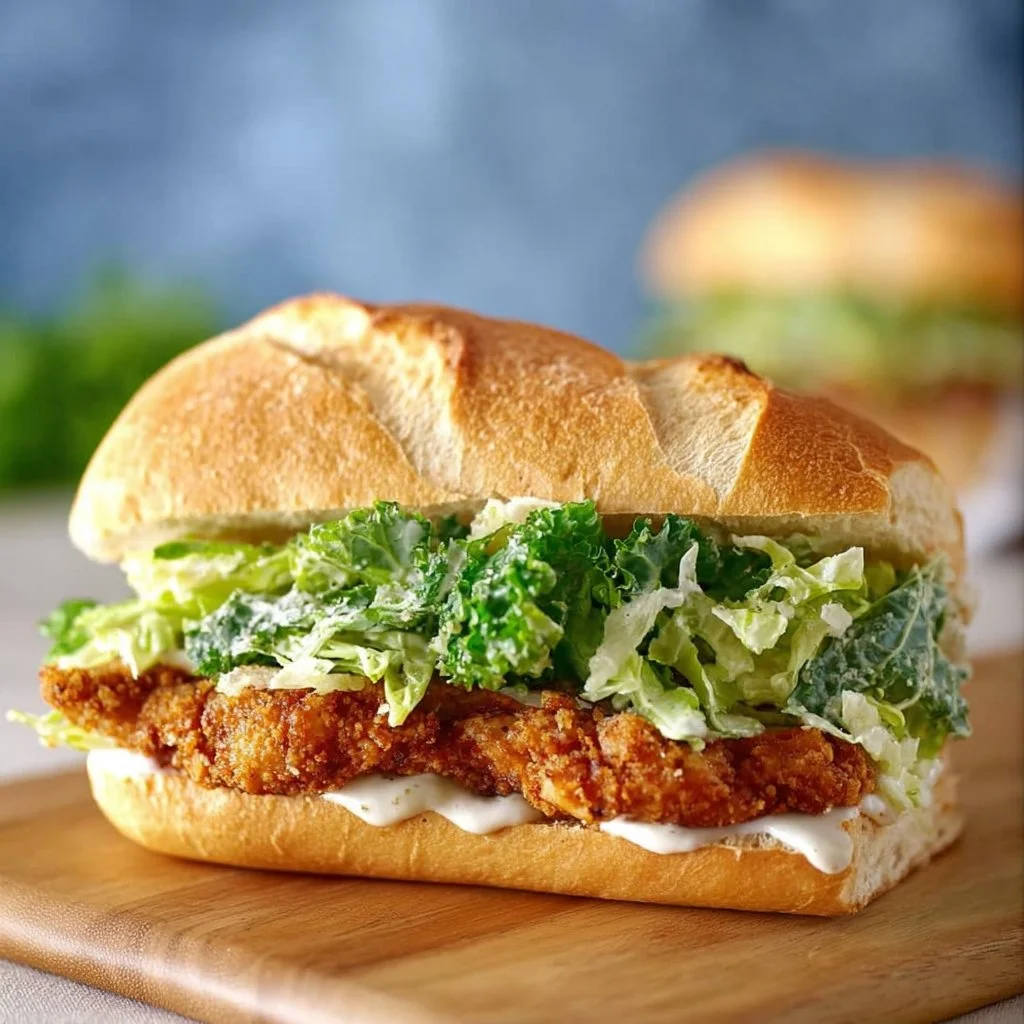Table of Contents
Introduction:
Baked beans are a beloved comfort food, cherished for their rich flavors and versatility. Whether served as a hearty side dish at barbecues or enjoyed as a warm, standalone meal, baked beans have found their way into kitchens around the world. This dish blends tender beans with sweet, smoky, and savory ingredients to create an irresistible flavor profile.
This guide explores everything you need to know to create the perfect baked beans recipe at home: their history, health benefits, recipe variations, and preparation techniques. Whether you’re a beginner cook or a seasoned chef, you’ll learn how to make baked beans from scratch or enhance store-bought options for a dish that’s sure to impress.
The History of Baked Beans
Origin of Baked Beans
Baked beans have a rich history that spans centuries and continents. The origins of this dish are deeply rooted in Native American cuisine. Indigenous peoples in the Americas prepared beans by slow-cooking them with maple syrup, fat, and sometimes venison. This method of preparation not only preserved the beans but also infused them with sweet and savory flavors.
As European settlers arrived in the Americas, they adopted and adapted these methods. The use of molasses or brown sugar replaced maple syrup, and pork fat became a staple addition to enhance the dish’s flavor and texture. Over time, this evolved into the baked beans we know today, particularly in New England, where they became a cornerstone of colonial cooking traditions.

Traditional Methods of Preparation
In earlier times, baked beans were cooked in clay pots and buried in embers or slow-cooked in large cast-iron pots over open fires. This slow, steady heat allowed the flavors to meld and the beans to become tender. The process often took several hours, making baked beans a quintessential slow food.
The invention of canning in the 19th century revolutionized the availability of baked beans. Canned varieties became a convenient staple, particularly popular in Britain, where they were embraced as a quick and affordable meal option. Today, both canned and homemade versions coexist, each with its distinct appeal.
Regional Variations Across the World
Baked beans have been embraced and adapted by cultures worldwide, with regional twists reflecting local tastes and traditions:
- United States: Classic recipes often feature molasses, brown sugar, and pork. Variations include barbecue baked beans and Tex-Mex styles with chili powder and jalapeños.
- United Kingdom: British baked beans are typically served in tomato sauce and are a breakfast staple. They are milder and less sweet than their American counterparts.
- Caribbean: Variations include the use of kidney beans or pigeon peas, with spices like allspice, thyme, and Scotch bonnet peppers for a bold flavor.
- India: A fusion take on baked beans might include curry spices like turmeric, cumin, and coriander for a spicy twist.
From its humble beginnings as a survival food to its current status as a global comfort dish, baked beans have proven to be a versatile and enduring favorite.
Health Benefits of Baked Beans
Nutritional Profile
Baked beans are a nutritional powerhouse, making them an excellent addition to a balanced diet. They are packed with protein, dietary fiber, and essential vitamins and minerals. A single serving (approximately 1 cup) typically provides:
- Protein: Around 13-15 grams, supporting muscle repair and growth.
- Fiber: Roughly 10 grams, aiding digestion and promoting a feeling of fullness.
- Iron: Contributing to red blood cell production and energy levels.
- Folate: Supporting DNA synthesis and cell repair.
These nutrients make baked beans particularly beneficial for vegetarians, vegans, and anyone looking to incorporate more plant-based proteins into their meals.
Heart-Healthy Benefits
Beans are naturally low in fat and cholesterol-free, making them heart-healthy. Their high fiber content can help reduce cholesterol levels and maintain steady blood sugar levels. Additionally, baked beans’ potassium levels support healthy blood pressure by counteracting the effects of sodium.
Are Baked Beans Good for Weight Loss?
Yes, baked beans can be part of a weight-loss-friendly diet when prepared with minimal added sugars and fats. The combination of protein and fiber keeps you feeling satisfied, reducing the temptation to snack on less nutritious foods. However, moderation is key, especially with canned varieties that may contain added sugars and sodium.
Ingredients for Baked Beans

Essential Ingredients
The ingredients for baked beans can vary depending on the recipe, but these are the essentials:
- Beans: Navy beans are most commonly used, but pinto, cannellini, or black beans work well too.
- Sweeteners: Brown sugar, molasses, or maple syrup provide sweetness and balance the dish’s savory components.
- Acids: Vinegar or tomato-based ingredients (like ketchup or tomato paste) add tanginess and depth.
- Smoky Flavor: Smoked paprika, liquid smoke, or bacon are often used to achieve a smoky profile.
- Spices and Herbs: Garlic, onion, mustard, and sometimes chili powder for heat.
Optional Additions
For added variety, consider incorporating:
- Proteins: Sausage, ham, or even ground beef for a heartier dish.
- Vegetables: Diced bell peppers, carrots, or celery for added nutrients and texture.
- Liquids: Broth or beer for depth of flavor and to keep the beans moist during cooking.
Ingredient Tips for Better Flavor
- Always rinse and soak dried beans before cooking to reduce cooking time and enhance texture.
- Use fresh or high-quality spices to ensure the dish is aromatic and flavorful.
- When using canned beans, opt for low-sodium varieties to control salt levels in the recipe.
The right combination of ingredients ensures that your baked beans are not only delicious but also tailored to your personal preferences and dietary needs.
Types of Beans for Baked Beans
Choosing the Right Bean
The type of bean you choose can significantly affect the flavor and texture of your baked beans. Here are the most popular options:
- Navy Beans:
These small, white beans are the traditional choice for baked beans. They cook to a creamy texture and easily absorb the flavors of sauces and spices. - Pinto Beans:
Slightly larger and speckled, pinto beans add a richer, earthy flavor to baked beans. They’re a great choice for southwestern or spicier variations. - Great Northern Beans:
Mild and slightly nutty, these beans are versatile and retain their shape well during cooking. They’re ideal for baked beans that need a firmer texture. - Black Beans:
While not traditional, black beans can be used for a unique, slightly sweet twist on baked beans, particularly in Caribbean or barbecue-inspired recipes. - Kidney Beans:
These large, robust beans are less common in traditional baked beans but work well in heartier, meat-heavy recipes.
Step-by-Step Baked Beans Recipe
Ingredients Needed
- 2 cups dried navy beans (or 4 cups canned navy beans)
- 1 cup diced onion
- 3/4 cup ketchup
- 1/2 cup molasses
- 1/4 cup brown sugar
- 2 tablespoons yellow mustard
- 1 tablespoon apple cider vinegar
- 1 teaspoon smoked paprika
- 1/2 teaspoon salt (adjust to taste)
- 1/4 teaspoon black pepper
- 2 slices of bacon (optional, for smoky flavor)
- 3 cups water or broth (for dried beans)
Preparation Steps
1: Prepare the Beans
- For dried beans: Rinse them thoroughly and soak them in water overnight. Drain, then boil the beans in fresh water for 60-90 minutes until tender. Drain and set aside.
- For canned beans: Rinse them under cold water to remove excess salt.
2: Create the Sauce
- In a medium saucepan, combine ketchup, molasses, brown sugar, mustard, apple cider vinegar, and smoked paprika.
- Heat over medium-low, stirring occasionally, until the mixture is smooth and slightly thickened.
3: Combine Ingredients
- Preheat your oven to 325°F (163°C).
- In a large oven-safe pot or Dutch oven, layer the cooked beans and diced onions.
- Pour the sauce over the beans and gently stir to coat evenly.
- If using bacon, lay slices over the top for added flavor.
4: Bake the Beans
- Cover the pot and bake for 2-3 hours. Check occasionally, adding a splash of water or broth if the beans start to dry out.
- For a thicker sauce, remove the lid for the final 30 minutes of baking.
5: Serve and Enjoy
Remove the beans from the oven and allow them to cool for 10-15 minutes. Garnish with chopped parsley if desired, and serve hot alongside your favorite main dishes or on toast for a simple meal.
How to Cook Perfect Baked Beans
Tips for Consistency
Achieving the ideal consistency is key to making great baked beans. Here’s how:
- Soak Beans Properly: If using dried beans, soak them overnight. This ensures even cooking and prevents toughness.
- Simmer Slowly: Whether cooking on the stovetop or in the oven, maintain a low heat. Slow cooking allows the beans to absorb flavors fully.
- Don’t Over-Stir: Frequent stirring can cause beans to break apart, leading to a mushy texture. Gently fold the mixture occasionally if needed.
- Adjust Liquid Levels: Keep an eye on the liquid during cooking. Add small amounts of water or broth to prevent drying out but avoid making the sauce too runny.
Balancing Flavors
A perfect batch of baked beans is a balance of sweet, savory, smoky, and tangy flavors. Here’s how to get it right:
- Sweetness: Brown sugar, molasses, or maple syrup provides a rich sweetness. Taste and adjust according to preference.
- Acidity: Apple cider vinegar, tomato paste, or even a splash of lemon juice can add a tangy brightness to the dish.
- Smokiness: Ingredients like smoked paprika, liquid smoke, or bacon infuse the beans with a robust smoky aroma.
- Seasoning: Don’t skimp on salt, pepper, garlic powder, or mustard for added depth.
Avoiding Common Mistakes
- Skipping Soaking: If you skip soaking dried beans, they may remain tough even after cooking.
- Overcooking Canned Beans: Canned beans only need reheating, not extended cooking, to prevent them from turning to mush.
- Neglecting Sauce Thickness: Always monitor the sauce. A watery consistency can dilute the flavor, while overly thick sauce can make beans feel dry.
Flavor Variations
Sweet Variations
- Honey and Brown Sugar: Replace molasses with honey for a lighter sweetness, and increase brown sugar for a dessert-like flavor.
- Maple Syrup: Use pure maple syrup instead of brown sugar for a New England-style recipe.
Savory Variations
- Herb-Infused Beans: Add bay leaves, thyme, or rosemary for a fragrant twist.
- Onion and Garlic: Sauté onions and garlic in butter or olive oil before mixing them into the beans for an aromatic base.
Spicy Variations
- Chili and Jalapeño: Add diced jalapeños or a pinch of cayenne pepper for a spicy kick.
- Barbecue Beans: Use barbecue sauce instead of ketchup, and include chili powder or hot sauce for a bold flavor.
International Twists
- Caribbean Style: Use kidney beans, coconut milk, and allspice for a tropical flavor.
- Indian-Inspired Beans: Add turmeric, cumin, and coriander to the sauce for a warm, spiced variation.
- Mexican-Inspired Beans: Incorporate black beans, corn, and chipotle peppers for a smoky, spicy dish.
With these tips and variations, you can customize baked beans to suit any occasion or personal preference, ensuring every bite is packed with flavor.
Serving Suggestions

Perfect Pairings
Baked beans shine as a side dish but can also star as the main course. Here are some classic pairings:
- Barbecue Favorites: Serve baked beans alongside grilled chicken, ribs, pulled pork, or hamburgers for a complete BBQ feast.
- Toast Topping: In the British tradition, pile baked beans onto buttered toast for a quick and satisfying meal.
- Eggs and Breakfast Platters: Pair baked beans with scrambled eggs, sausage, or hash browns for a hearty start to the day.
- Rice or Cornbread: Add baked beans to rice or serve with warm, crumbly cornbread for a Southern-inspired comfort meal.
Presentation Ideas
- Rustic: Serve directly from a cast-iron skillet or Dutch oven for a homey, country-style presentation.
- Individual Portions: Scoop beans into ramekins or mason jars for personal servings at picnics or gatherings.
- Garnishes: Sprinkle fresh parsley, chopped green onions, or crispy bacon bits over the beans for an attractive finishing touch.
Storing and Reheating Baked Beans
Storage Tips
- Refrigeration: Store baked beans in an airtight container in the refrigerator for up to 5 days.
- Freezing: Let the beans cool completely before transferring them to freezer-safe bags or containers. They can be frozen for up to 3 months.
Reheating Methods
- Microwave: Heat a single serving in a microwave-safe dish, stirring every 30 seconds to ensure even heating.
- Stovetop: Warm the beans over medium heat, adding a splash of water or broth to loosen the sauce if needed.
- Oven: Reheat in an oven-safe dish at 350°F (175°C) until warmed through, stirring occasionally.
Common Questions About Baked Beans
Can Baked Beans Be Frozen?
Yes, baked beans freeze well. Ensure they’re stored in airtight, freezer-safe containers to prevent freezer burn. Thaw overnight in the fridge before reheating.
Are Canned Beans as Good as Fresh?
Canned beans are a convenient alternative and work well in baked bean recipes. While fresh or dried beans offer a slightly better texture, canned beans save time without compromising flavor.
How Can I Reduce the Sweetness?
If your baked beans taste too sweet, add a splash of vinegar, lemon juice, or tomato paste to balance the flavor. Adjust spices and salt as needed.
What’s the Best Way to Thicken the Sauce?
To thicken the sauce, simmer the beans uncovered for the last 30 minutes of cooking. Alternatively, mash a small portion of the beans and stir them back into the pot.
Are Baked Beans Gluten-Free?
Most baked beans are naturally gluten-free, but check labels for any added sauces or thickeners that may contain gluten. Opt for certified gluten-free ingredients if necessary.
Can I Make Baked Beans in Advance?
Yes! Baked beans often taste better the next day as the flavors have more time to meld. Store them in the refrigerator and reheat before serving.
Conclusion
Baked beans are a timeless dish, beloved for their comforting flavors and versatility. Whether you prefer them sweet, smoky, spicy, or savory, this guide equips you with the tools to create the perfect baked beans tailored to your tastes. From selecting the best beans to exploring exciting variations, baked beans can be an essential part of your culinary repertoire.
Try this recipe at your next gathering or family dinner, and watch it become an instant favorite. With a little practice, your baked beans will be the talk of the table.
You Might Also Like
- Discover the Perfect Texas Sheet Cake: Explore The Ultimate Guide to Texas Sheet Cake for expert tips and recipes to make this classic dessert irresistibly moist and flavorful.
- Elevate Your Cooking with Cottage Cheese: Dive into Delicious Cottage Cheese Recipes You Should Try Today for creative and healthy ways to incorporate cottage cheese into your meals.
- Master the Art of Pepper Steak: Impress your family and friends with Pepper Steak Recipe: A Flavorful and Tender Dish for Any Occasion, a step-by-step guide to this savory delight.





